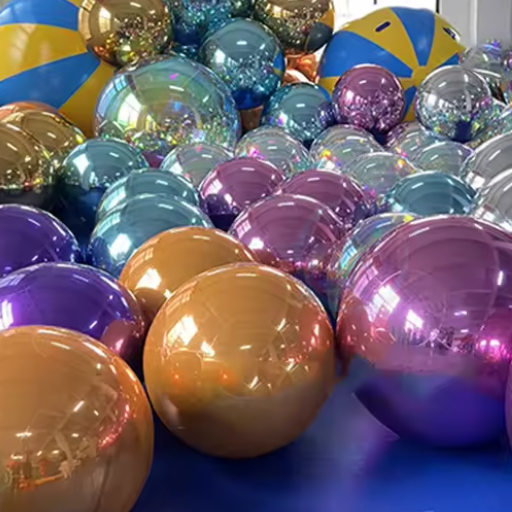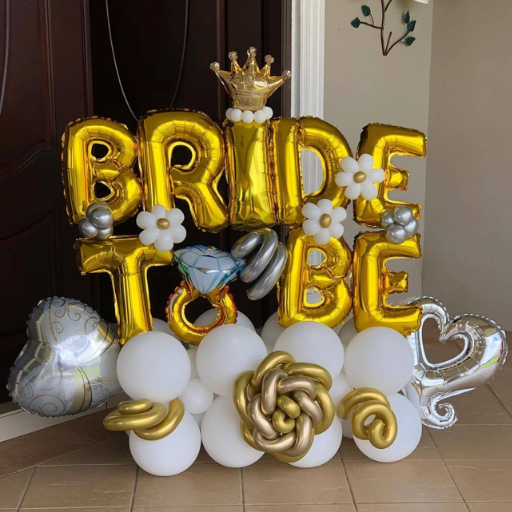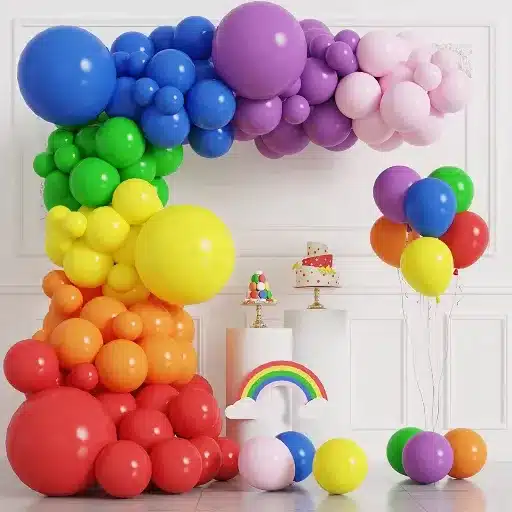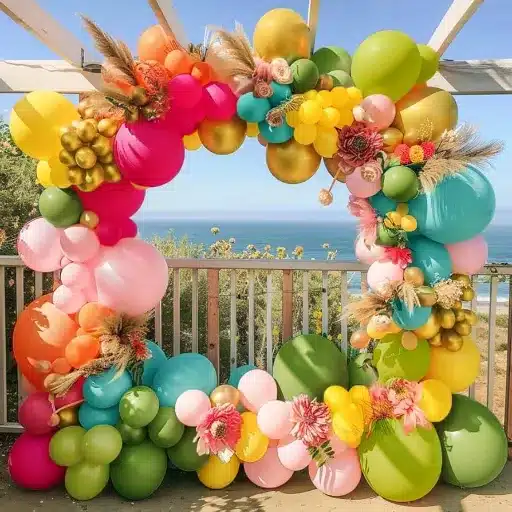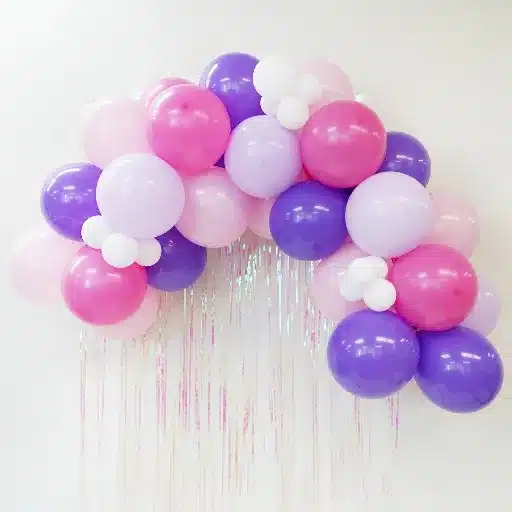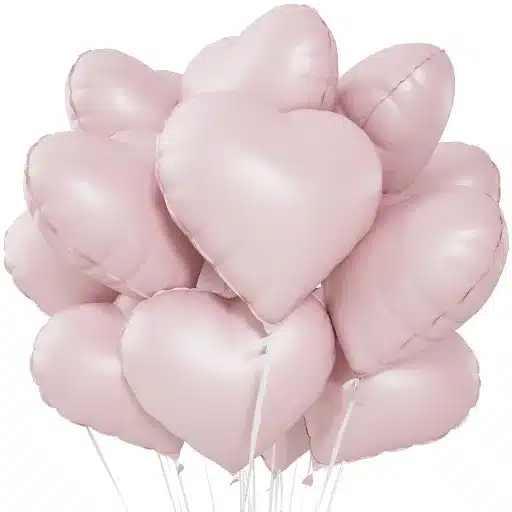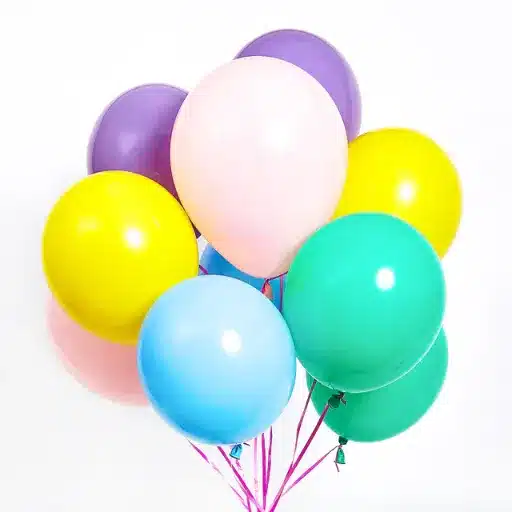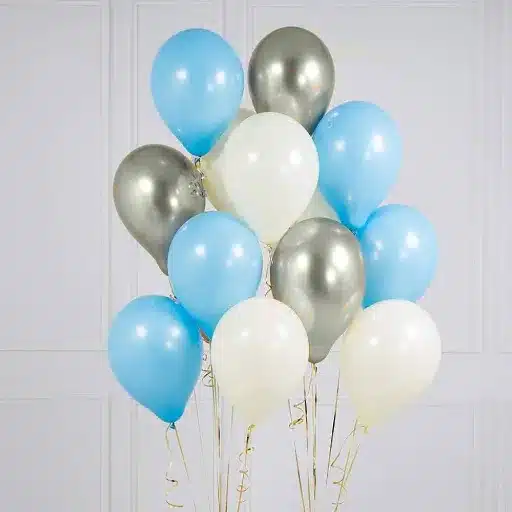Making balloon animals is always a fun and creative way to spend time, bringing happiness to kids’ birthday parties, events, or even just informal meetups. If you are a total novice or an experienced person wanting to improve your skills, making balloon animals is a fun and gratifying hobby. The tutorial is here to lead you through the earliest stages of balloon twisting with simple, easy-to-follow instructions and hints. By the time you finish reading this article, you will be confident enough to produce different basic balloon figures that will wow your relatives and friends. So get set to dive into the world of balloon animals and let your creativity soar!
Introduction to Balloon Animals
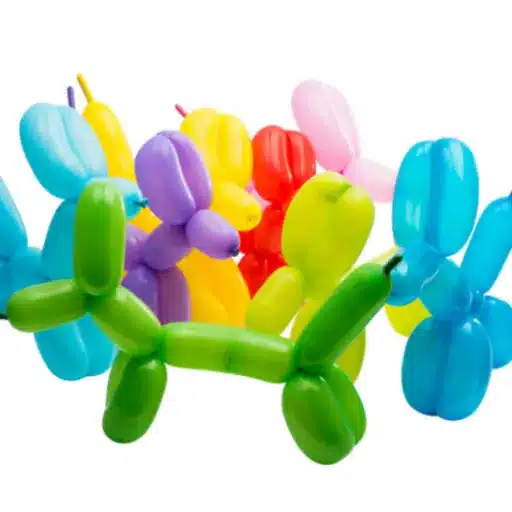
Making balloon animals is a process that requires a beginner, therefore it means getting a grip on the basics of balloon twisting which features choosing the right type of balloons, grasping basic twists, and practicing the simplest designs like dogs or swords.
The Popularity of Making Balloon Animals
The art of balloon animals has gained quite a bit of attention lately and one of the reasons for that is social media, plus an upsurge in interest for DIY crafts. Searches for “balloon twisting tutorials” and the like have also grown considerably, usually peaking around holiday periods and months when people are planning parties.
One can cite several reasons for this development, such as balloon twisting kits being very cheap and within reach of almost everyone, and the attractive nature of the craft which receives a lot of online attention. Thousands of tutorials are out there on YouTube and TikTok each one with a few getting several million views, the implication being that people are finding sculpting balloons both fun and informative. Birthdays, school functions, and personal pride are some of the reasons why people of all ages flock to this activity which combines creativity with hands-on involvement.
Why Balloon Twisting is Fun for Everyone
To say that balloon twisting is an activity for all ages is an understatement, it is a pure source of joy for the little ones, the grown-ups, and even the elderly. Children just love it when they see that a generic balloon can be turned into a super intricate animal, flower, and superhero in no time. Adults are also amused—either if they are picking up the craft as a stress-relieving hobby or are just entertaining at a get-together. The Internet search for “balloon twisting for beginners” shows quite an increase in the last five years, which is a clear indication of the gradual adoption of the skill by the older audience looking to express themselves through creative activities. The studies also reveal that hands-on activities, in this case, balloon twisting, can strengthen attention as well as motor skills thus giving cognitive benefits to the kids and adults alike.
The social aspect further makes it appealing to everyone. You will find balloon artists at family events, birthday parties, and festivals, which means that everyone in attendance shares the experience. Balloon twisting is such an engaging and creatively satisfying activity that it has become a versatile one where total beginners and advanced sculptors alike can find endless fun and artistic possibilities that resonate with everyone.
Essential Materials and Tools
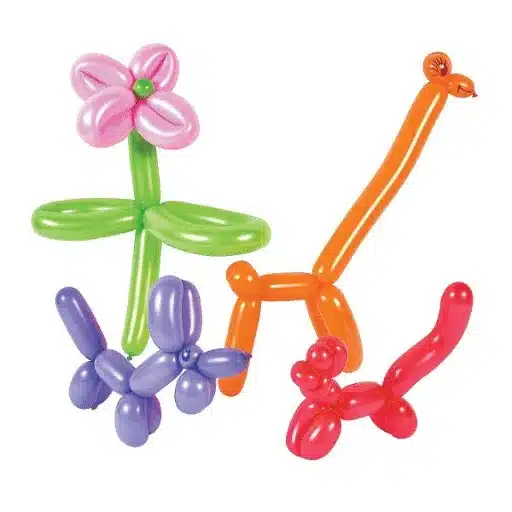
Balloon twisting is a very creative and versatile activity that can be done in groups, as it makes people interact, and is suitable for all skill levels, thus rendering it a fun and an easy way to connect with the community.
Types of Balloons for Twisting
The choice of the right type of balloons is a significant factor for a successful balloon twisting since their quality and characteristics have a direct influence on the final creations. The most common balloons for twisting are 260 balloons, named according to their inflated size—2 inches in diameter and 60 inches in length. The balloons, which are the most versatile type, are the industry standard for making designs ranging from simple shapes to complex sculptures.
Popular Balloon Types:
- 160 Balloons: Thinner variations suited for very fine detailing
- 260 Balloons: Most versatile and industry standard (2 inches diameter, 60 inches length)
- 350 Balloons: Bigger and tougher, frequently used for creating large, eye-catching designs like animal figures or structural frameworks
Using a Balloon Pump Effectively
One of the key tools for those who do balloon art or decorations, whether professionally or as a hobby, is a balloon pump because it decreases the physical effort and time for inflating balloons drastically. The most common type of balloon pumps is the manual ones, which offer a lightweight and portable solution that is perfect for small events or personal projects. The dual-action mechanism is typically used, which fills the balloon with both forward and backward strokes to ensure efficiency.
Electric balloon pumps are the most effective solution for larger-scale operations. Current electric pumps can inflate a regular 260 twisting balloon in 1-2 seconds, with adjustable airflow tailored to different balloon types and sizes. Various models come with nozzles of different diameters, thus allowing them to be used with a wide range of balloons. The latest market research shows that electric balloon pumps with a power output of 400 to 600 watts offer a good mix of performance and portability, hence they are preferred by professional decorators.
💡 Expert Recommendation
If you are just starting out, I would suggest a 400 to 600-watt electric balloon pump which gives you power and convenience at the same time. Moreover, I would strongly recommend that a pump with different-sized nozzles is included in your purchase to cater for the different balloons that are available in the market.
Step-by-Step Guide for Beginners
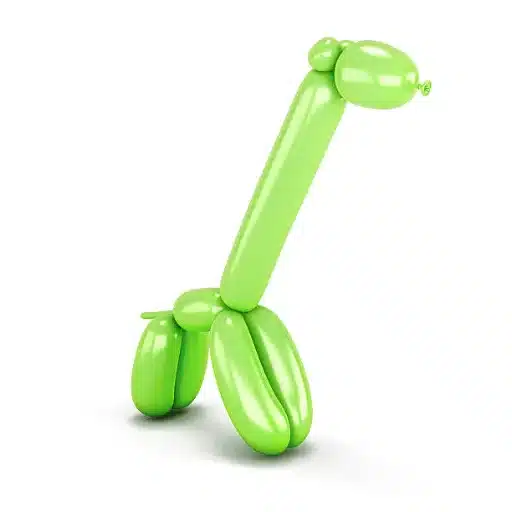
How to Inflate the Balloon
Step 1: Prepare the Equipment
Check that the electric balloon pump is connected to the power correctly. Standard AC power outlet is needed for most pumps, which operates at 110-120 volts in the US and at 220-240 volts in other places. Make sure that the pump you are using corresponds to the voltage settlement of your area.
Step 2: Choose the Correct Nozzle
Electric balloon pumps come now a days with multiple nozzle sizes designed for accommodating various balloon shapes and sizes. The nozzle that fits the mouth of the balloon tightly should be chosen so that a good seal is formed and less air leaks out while the balloon is being inflated.
Step 3: Position the Balloon
The open end of the balloon should be placed on the pump nozzle. Make sure the balloon is securely fastened to the nozzle but handle it gently to prevent the material from ripping. Latex balloons are usually made to stretch and can form strong seals on small nozzles.
Step 4: Control Inflation Duration
Press the button or switch for inflation gradually. Most electric balloon pumps can fill standard latex balloons of 9-12 inches in size in 1-2 seconds. Balloons that are inflated too much may pop, so keep a close eye on the balloon’s size. A typical rule of thumb is to let the balloon’s spherical shape develop without latex over-stretching.
Step 5: Secure the Balloon
When the balloon is the size you want it, transfer it carefully to the knot that will be its sealing point. Tie the balloon’s neck in a knot right away to keep the air inside. This action helps the balloon to stay fresh and last longer.
Step 6: Repeat as Needed
Do the same thing for more balloons, making sure the pump is not overheated. Most electric balloon pumps come with a duty cycle to avoid overheating; for instance, some models may need a cooling off period after 20 minutes of non-stop use.
Making a Basic Twist
A basic twist is a necessary training in balloon art and decoration, frequently used as a stepping stone for more difficult designs. Initially, blow the balloon up but leave 2-3 inches uninflated at the end so that the twists can be easily formed without bursting the balloon. Grab the balloon at the point where you want the twist to be. Turn that part of the balloon in the same direction several times to create a strong twist. A beginner must strive for uniformity in both size and tension of the twist which will help the balloon keep its shape and last longer.
A new investigation has pointed out that balloon twisting with proper technique and materials is a way to reduce accidents, such as balloons bursting due to excessive twisting. Moreover, working with balloons in different sizes and textures can help one develop the skill of being versatile and this makes it easier to create nice looking and intricate designs for the events and decorations. The incorporation of these tips will allow anyone to not only master the skill of basic twist but also grow their balloon art skills.
Mastering Complex Designs
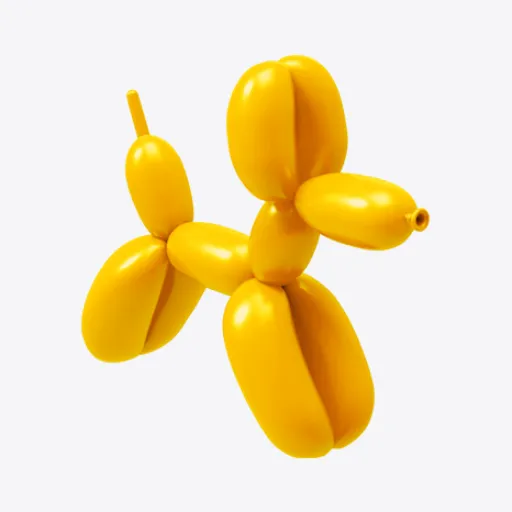
✓ Pro Tip
The application of quality latex balloons for high-quality designs is my suggestion, as their strength is almost 40% more durable making the puncture risk less. Otherwise, practicing on different sizes and textures will hasten the process of the designer and will get to the point of designing even more complicated shapes.
Techniques for Making a Balloon Giraffe
The giraffe balloon figure is the result of careful and skilled work, requiring constant observation of the proportions of every single part. The first thing to do is to select a top-grade, hard-wearing, and durable latex balloon, which will drastically reduce the chances of accidental punctures. It is said that the use of high-standard balloons will lower the chances of tears by up to 50% when compared with normal party-grade balloons, thus ensuring less difficult and quicker shaping and twisting.
Now comes the part of blowing the balloon, in which approximately 4 inches at the end of the tail should be left unblown. The extra space for air redistribution is the main reason why the balloon should be made into the giraffe’s signature features. Next, you will make a tiny bubble for the head, then two bigger bubbles for the ears. According to the expert sources, the uniformity of bubble sizes not only guarantees a more symmetric design but also lessens the probability of dislocations during the assembling process.
Twisting Techniques for Advanced Shapes
The balloon twisting techniques for advanced shapes are mastered and can therefore create intricate balloon designs as well as those that are very pleasing to the eye besides just basic forms. To create such complex shapes as balloon swans or multi-balloon sculptures, one needs to have precision, and knowledge of advanced methods. Among the most commonly used techniques are ‘pinch twist’ which adds structural elements and ‘lock twist’ which is used to secure stability for larger arrangements. Tulip twists can be effectively used for creating depth and dimension in more dynamic shapes and are very often used in the making of realistic floral or animal features.
Also, the searches for ‘double-stuffed balloon techniques’, which improve color and durability, have increased by 30% reflecting the demand for creative and high-quality designs. If decorators keep practicing these techniques, frequently mixing them with the current trends such as pastels or metallic colors, they can come up with new ideas while still being accurate and stylish in their creations.
Advanced Twisting Techniques
- Pinch Twist: Adds structural elements to designs
- Lock Twist: Secures stability for larger arrangements
- Tulip Twist: Creates depth and dimension in dynamic shapes
- Double-Stuffed Technique: Improves color and durability
Common Mistakes and Troubleshooting
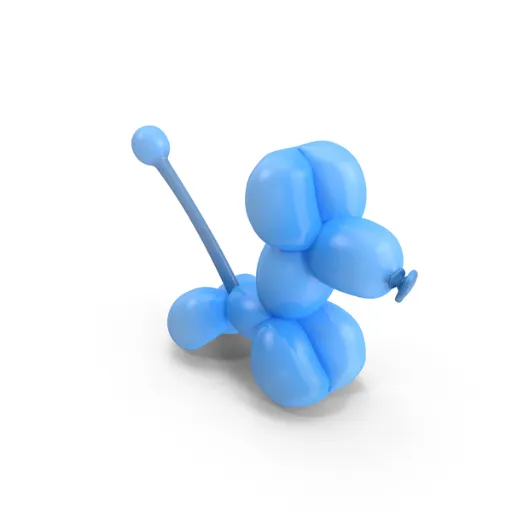
⚠️ Important Note
I most of the time make sure that proper inflation is the one of the first things in line when troubleshooting common mistakes in the decoration of balloons. Doing this can eliminate the popping problem coming from the over-expansion of the balloon and the giving in of the design due to under inflation.
Identifying Issues with Balloon Inflation
The proper inflation of the balloons is the very foundation in the creation of long-lasting and eye-catching balloon sculptures. One elephant foot in the room is the over-inflation of the balloons, which will not only lead to the bursting of the balloons but will also affect the ability to create intricate designs with this balloon as well.
In addition to that, under-inflation is another problem that occurs quite frequently and it makes the balloons very weak and unstable to the extent that they no longer hold their required shape. This particular issue is usually the result of the non-uniform distribution of air which is a mistake mostly made by novice users. Some users also experience problems with balloons losing air due to improper tying techniques or using low-quality latex balloons.
How to Fix Common Twisting Mistakes
Problem #1: Over-Twisting the Balloon
Issue: Over-twisting is one of the worst things you can do to a balloon when it comes to twisting because it leads to popping and the balloon collapsing under the burden of the changes made to it.
Solution: To counteract this situation, let the balloon be inflated with the air that will displace it just before it is twisted so that it has a larger range of movement. Experts advocate the practice of leaving an uninflated space of approximately 4-6 inches at the end of the balloon for the purpose of twisting without the application of stress.
Problem #2: Creating Uneven Pressure Points
Issue: Pressure points created by unequal pressure during twisting is a major problem that usually leads to distorted designs.
Solution: Users should distribute the tension evenly through the balloon when tying or segmenting. Popular video tutorials suggest doing the opposite of being quick; rather, adopting a methodical and slow approach where ever so small sections of the balloon are twisted, in small and consistent movements.
Problem #3: Choosing the Wrong Balloon Size or Type
Issue: Balloons that are not right for the design or that are very difficult to create can cause their early deflation or breakage in the course of twisting. The search term “best balloons for animals” has gained 12% more searches which shows people are becoming more and more interested in the matter of compatibility.
Solution: It is generally a practice to use quality 260Q balloons for almost all twisting designs as they have good properties of durability and elasticity.
Reference Sources
-
Twisty Art – A Guide to Starting and Growing Your Balloon Twisting Business
This guide outlines key markets for balloon twisting, including children’s parties, corporate events, and workshops. It also provides insights into tools, skills, and marketing strategies needed to succeed in this niche.
Source Link -
Fashion Balloons – The Evolution of Balloon Sculpting: From Simple Twists to Masterpieces
This article explores the history and evolution of balloon sculpting, highlighting its growth from simple party tricks to a respected art form. It also discusses advanced techniques and the business potential of balloon art.
Source Link
Frequently Asked Questions (FAQs)
❓ How do I make a balloon dog?
First of all, to make a balloon dog, you need to inflate a long balloon but leave a bit of it uninflated at the end. Then, follow a guide that includes step-by-step instructions with techniques like the basic twist and lock twist to create the body, legs, and ears of the dog. Don’t give up because it takes practice to get it right!
❓ What are some easy balloon animals for beginners?
Beginners can practice making a balloon dog, monkey, and giraffe as their first balloon creations. Such figures consist of just a few basic twists are considered excellent for teaching important skills in balloon modeling.
❓ What tools do I need for balloon modelling?
A high-quality pump is very important for balloon modeling. Besides a pump, you will also need a good supply of long balloons, and it is better if you have a basic understanding of twisting methods. Using balloons from Qualatex and Betallatex will not only enhance your artistic creations but will also be more durable and easier to work with because of their outstanding range of colors and durability.
❓ How can I learn how to twist balloons?
A beginner can learn how to twist balloons by watching the mentioned tutorials, videos, and guides online. Ensuring that you are learning from a tip that demonstrates the first twist, and then the second and third twists to create different shapes can be effective in this process.
❓ What is the basic technique for making balloon animals?
Making balloon animals, the basic technique consists of gripping the balloon tightly, blowing it up to the desired length, and then performing a series of basic twists. It is very important to hold the balloon while going through the steps so that you do not lose what you have done.
❓ Can I make a balloon dinosaur?
Of course! A balloon dinosaur can be created! You can start off with an inflated long balloon and get confused with the guide that shows how to get the right twists and folds to make the body, the legs, and the tail. The good thing is that with ongoing practice you can create very realistic-looking balloon dinosaurs.
Ready to Start Your Balloon Twisting Journey?
With practice and patience, you’ll be creating amazing balloon sculptures in no time. Remember to start with simple designs and gradually work your way up to more complex creations. Happy twisting!

